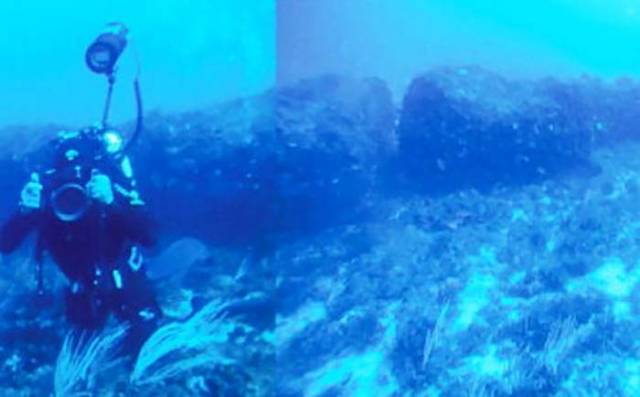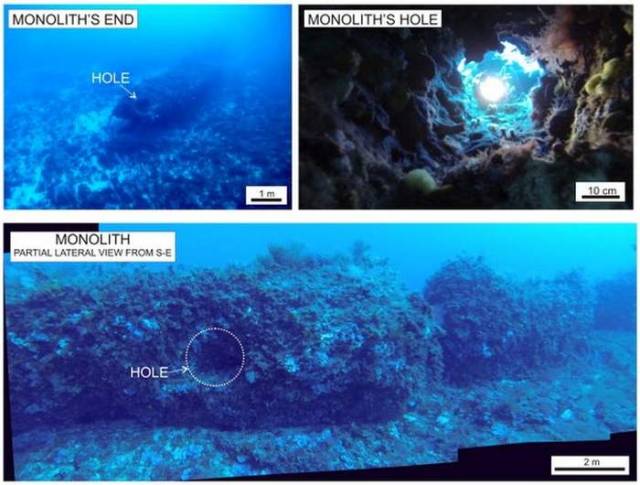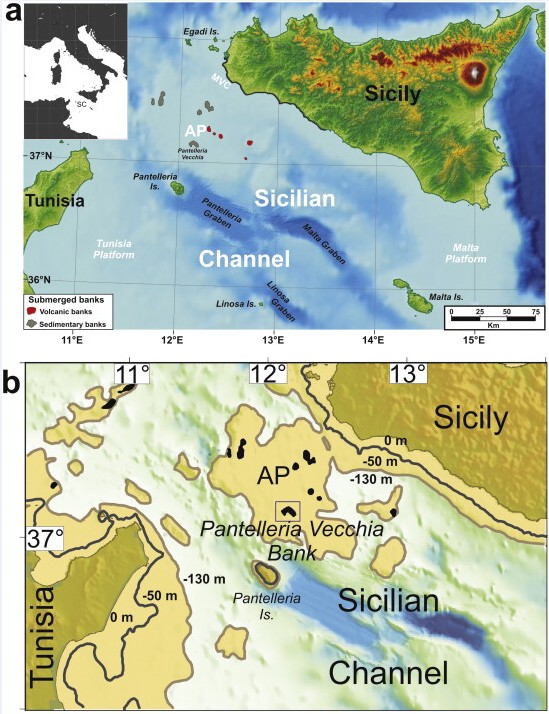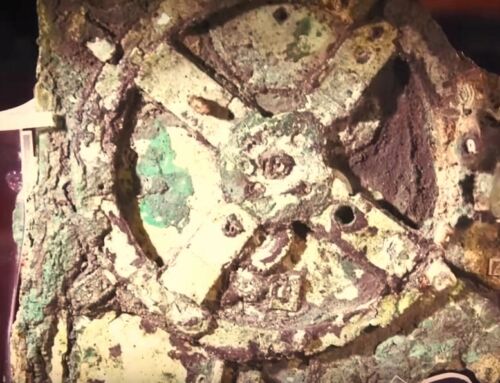10,000-years-old underwater “Stonehenge” discovered near Sicily, Italy, created by an ancient civilization.
Archaeologists discovered a submerged 12-meter-long monolith in the Sicilian Channel, (central Mediterranean Sea), evidence for “significant Mesolithic human activity in the Sicilian Channel region,” one of the shallow shelves of the central Mediterranean region.
Underwater composite photographs taken from divers, showing the discovered monolith and some details. Credit: Emanuele Lodolo
Zvi Ben-Avraham, from the Department of Earth Sciences at Tel Aviv University and Emanuele Lodolo, from the National Institute of Oceanography and Experimental Geophysics in Trieste, Italy, wrote in the Journal of Archaeological Science:
“There are no reasonable known natural processes that may produce these elements.
The Sicilian Channel is one of the shallow shelves of the central Mediterranean region where the consequences of changing sea-level were most dramatic and intense.”
Here we present morphological evidence, underwater observations, and results of petrographic analysis of a man-made, 12 m long monolith resting on the sea-floor of the embayment at a water depth of 40 m. It is broken into two parts, and has three regular holes: one at its end which passes through from part to part, the others in two of its sides. Extrapolating ages from the local sea level curve, we infer that seawater inundated the inner lands at 9350 ± 200 year B.P., the upper limit which can be reasonably taken for the site abandonment.
This discovery provides evidence for a significant Mesolithic human activity in the Sicilian Channel region.
Morpho-bathymetric map of the Sicilian Channel and surrounding regions. Bathymetric data are taken from the International Bathymetric Chart of the Mediterranean.
via discovery








Leave A Comment